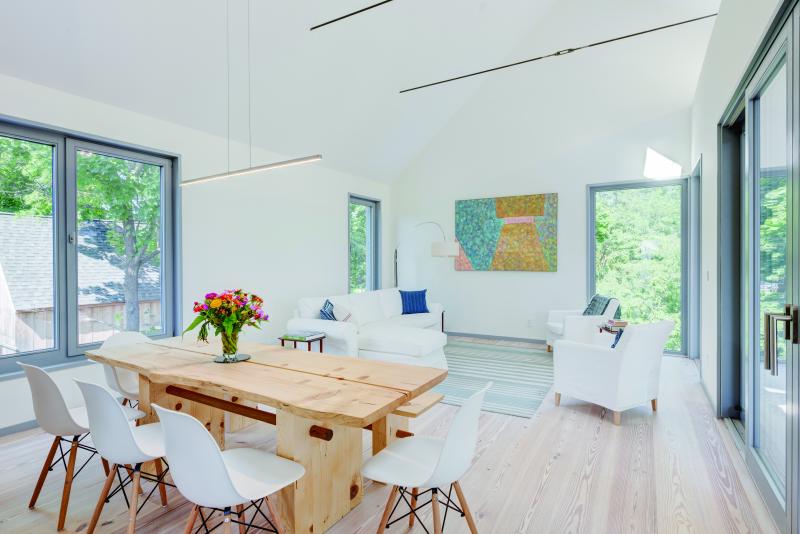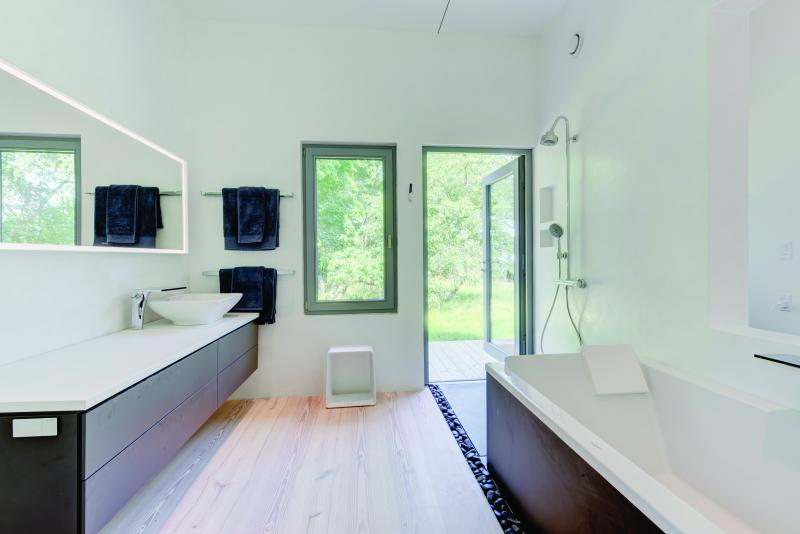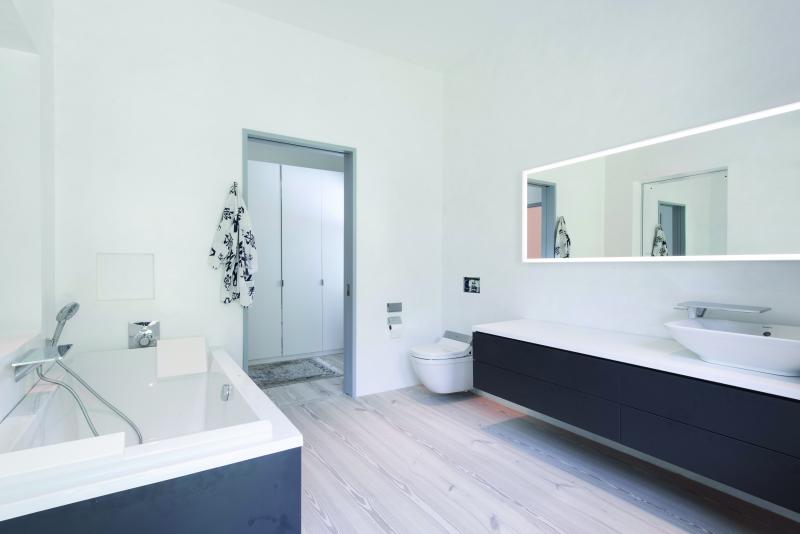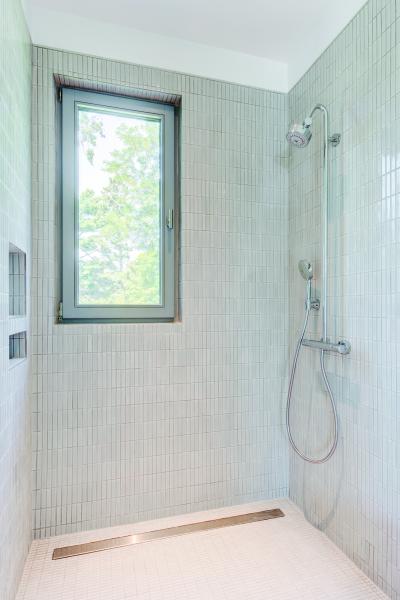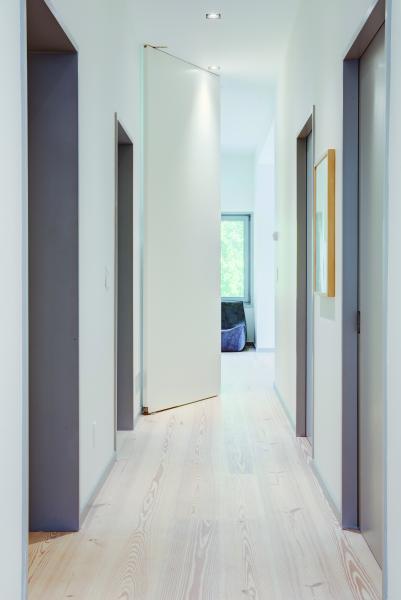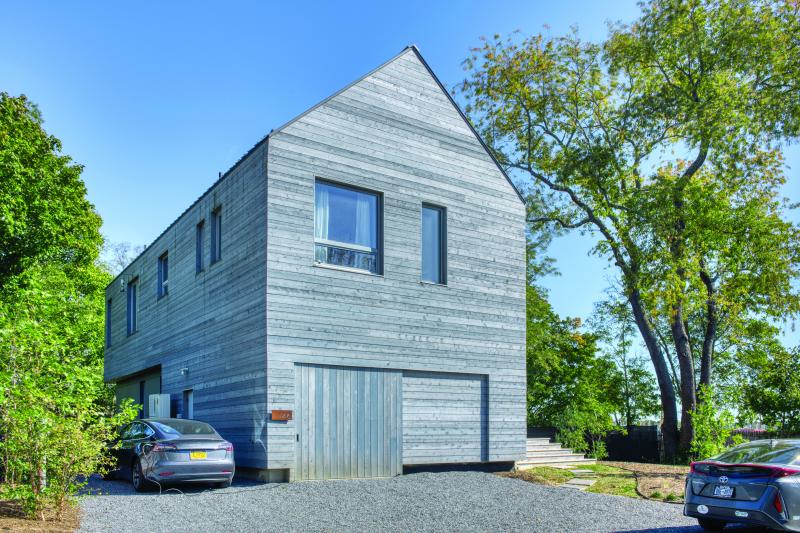For his Long Island, N.Y., beach house, architect Wayne Turett experimented with the Passive House standard to get a sense of the feasibility and cost.
The 2,400-square-foot home on the North Fork of island includes an outdoor shower, a dock with a sailboat, and a covered porch with harbor views. But what makes it a truly comfortable place to enjoy the seaside, in all seasons, is its energy-efficient design.
Turett, the principal and founder of an eponymous residential architecture firm in Manhattan, designed and built the home to meet the Passive House standard—the most rigorous for energy-efficient building. “Passive House offers a higher level of comfort, doesn’t require compromising on design, and will eventually pay for itself, so it’s worth doing,” the architect says.
[ Read More: AN ARCHITECT USES CONCRETE, GLASS AND STEEL FOR A MODERN MIXED-USE BUILDING ]
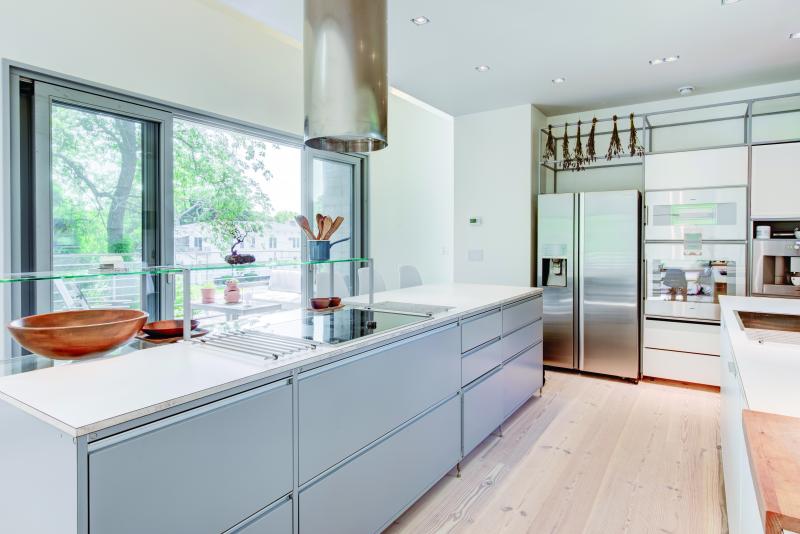
A wonderfully elegant approach, Passive Houses are tightly air-sealed and heavily insulated, allowing them to maintain a comfortable temperature with minimal heating and cooling. In addition, Passive Houses are equipped with a high-tech ventilation system—an energy recovery ventilator or heat recovery ventilator (HRV) that brings in fresh air while capturing hot or cold energy from stale exhaust air. Originally developed for Germany’s cold but temperate climate, the program’s requirements have since been fine-tuned for different climate zones. Turett hasn’t installed solar panels yet, but given the all-electric home’s performance so far, it would be easy for the house to achieve net-zero energy.
It was critically important to Turett that he could still design his ideal house while achieving Passive House performance. “I used to think a Passive House had to have small windows and thick walls, like a cave,” Turett admits. But then he had the opportunity to stay in a friend’s Passive House in Berlin, Germany. “It had huge windows and tons of light. I was totally blown away,” he says.
[ Read More: HEAT-TREATED WOOD CLADDING HELPS A HISTORIC MIXED-USED PROJECT BLEND IN ]
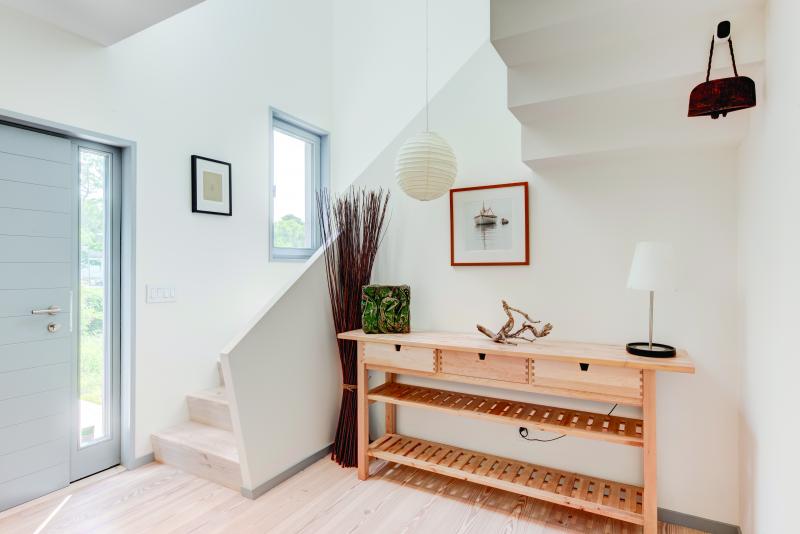
Because his property is in the town’s historic district, Turett designed his Greenport, N.Y., retreat in the shape of a traditional barn and clad it in shiplap cedar siding. But he also gave it clean, modern lines. The long side of the home is oriented to the south, to provide water views and take advantage of the sun’s warmth in winter. Its five sets of sliding glass doors and many windows, all from German company Bildau & Bussmann, are wood-framed and triple-paned for greater insulation. Operable skylights, also triple-glazed, open to let heat out in the summer. To compensate for the lower R-value of all the glazing, Turett increased insulation on the walls, roof, and foundation. For the home’s airtight seal, he used Huber Engineered Woods’ Zip System sheathing over the framing, carefully taping the seams between the 4-by-8-foot fiberboard panels, which come with a built-in air barrier.
“It’s a great product that I’d recommend for either Passive House or regular construction,” Turett says. He also recommends ERVs from Swiss company Zehnder for their high efficiency and ability to work well in homes with ductwork to every room, which is true of this house.
[ Read More: METAL PANELS HELP CREATE A BRIGHT YET DURABLE CONDO BUILDING ]
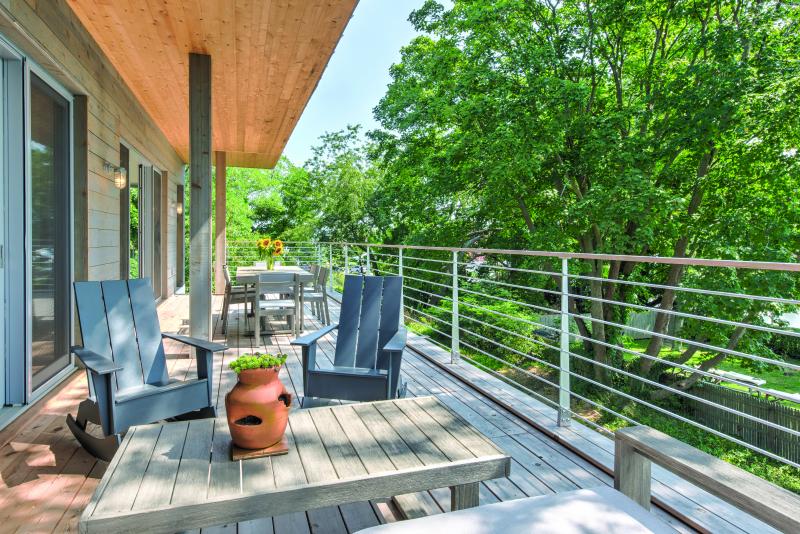
Inside, the home feels airy and open. The flooring, which Turett calls “the star of the house,” is heart pine finished with Danish WOCA wood oil, an increasingly popular alternative to polyurethane that results in a natural-feeling surface. The efficient floor plan, which includes three bedrooms and a den/fourth bedroom, feels spacious in part thanks to its pocket doors, which are equipped with spring-loaded, self-closing hardware from Japanese company Kenwa.
With nearly two years of experience in the house, the architect would love to give more clients this level of quality in their living environments. “The air quality is particularly good, it’s super-quiet, and the light is brilliant,” he says. “It’s wonderful to experience on a daily basis.”
This story first appeared in PRODUCTS' sister publication Custom Builder.
[ Read More: EXPANSIVE WINDOWS GIVE SUBURBAN HOME AN INDOOR/OUTDOOR CONNECTION ]
